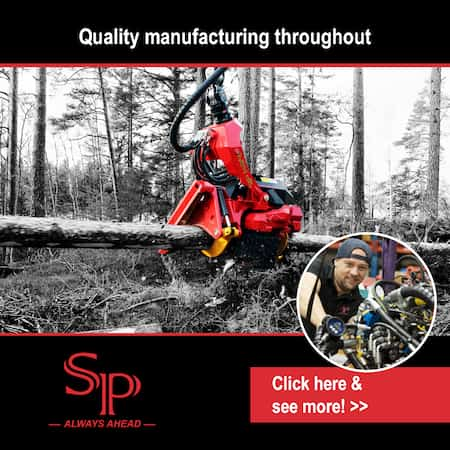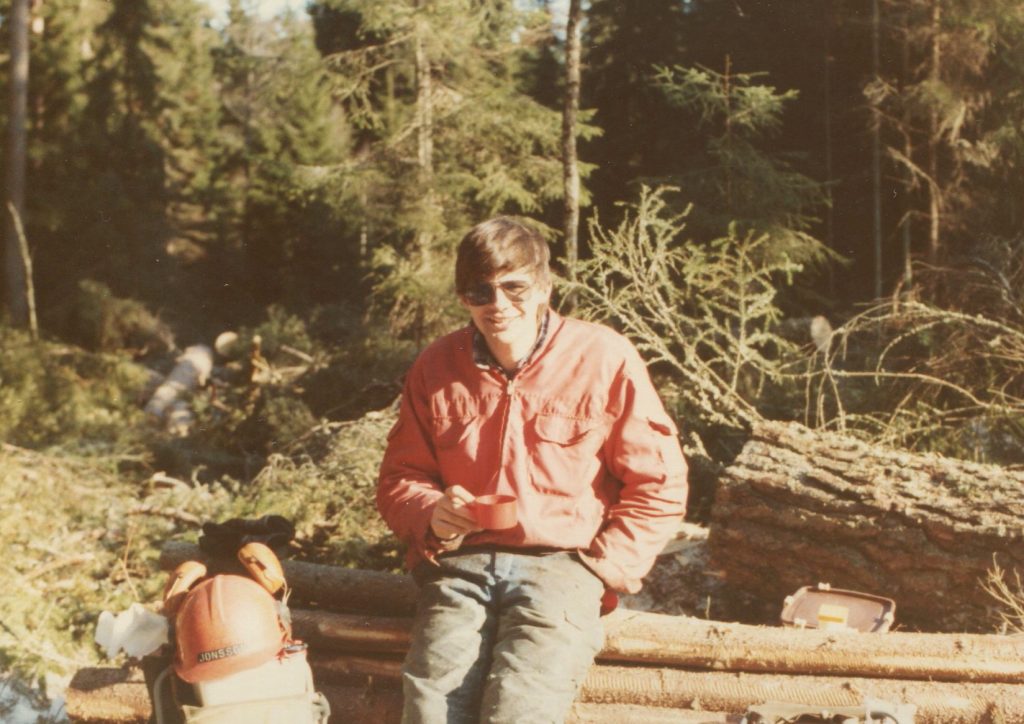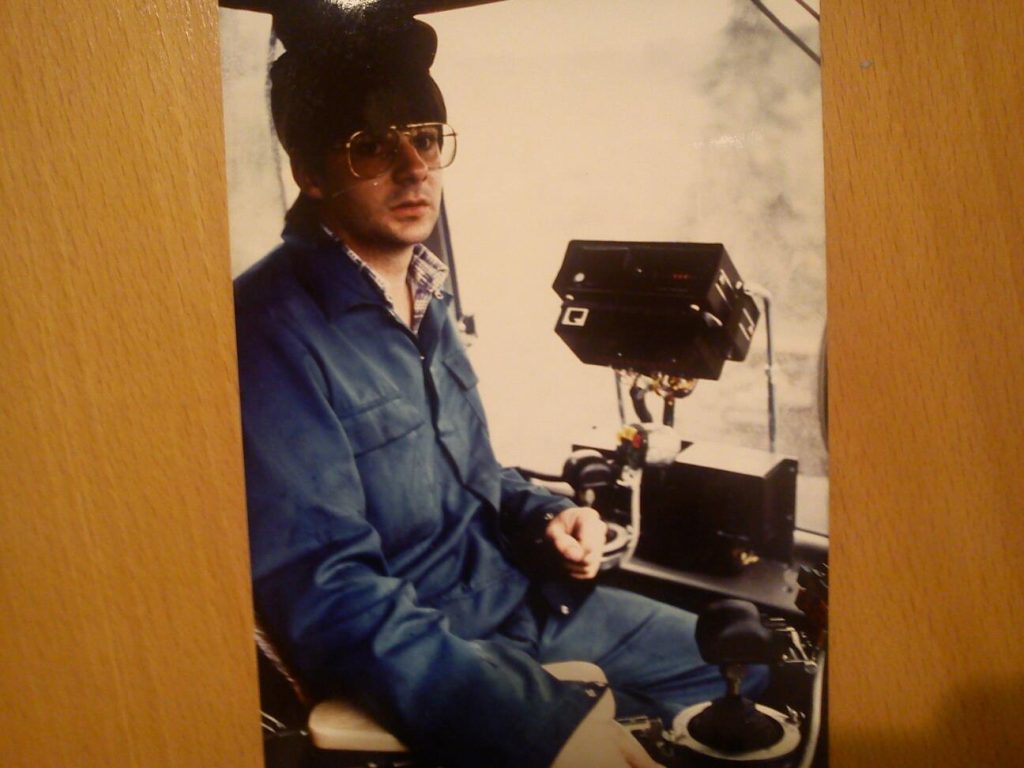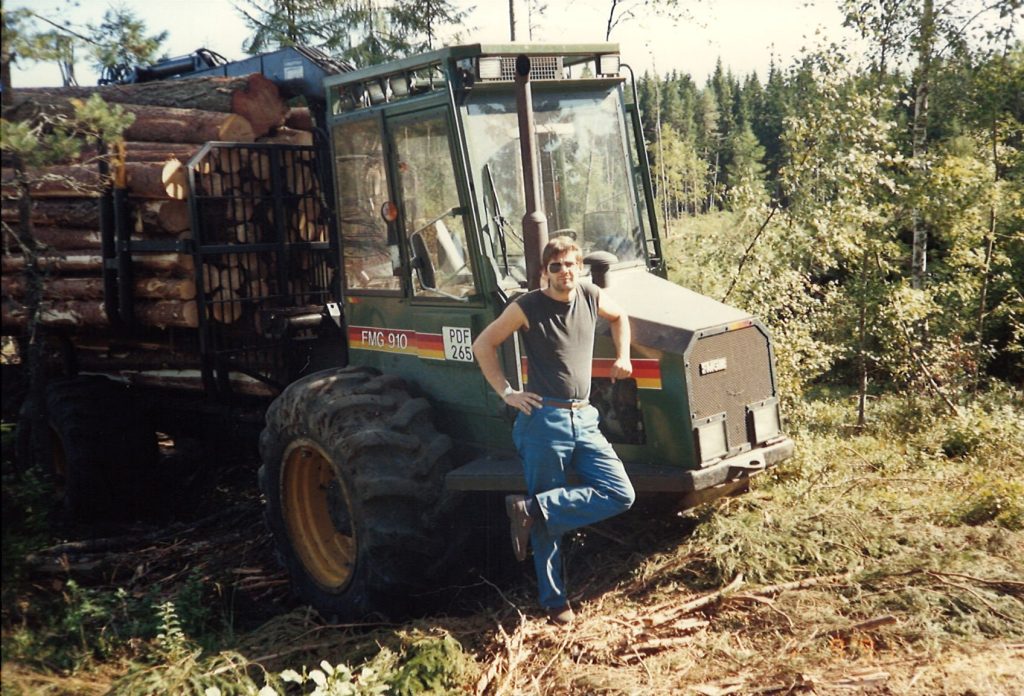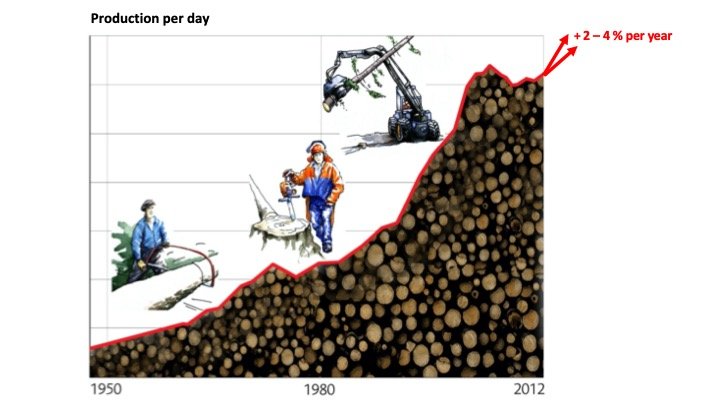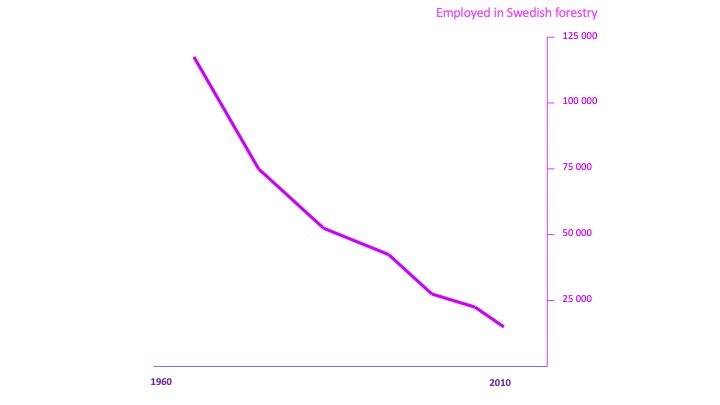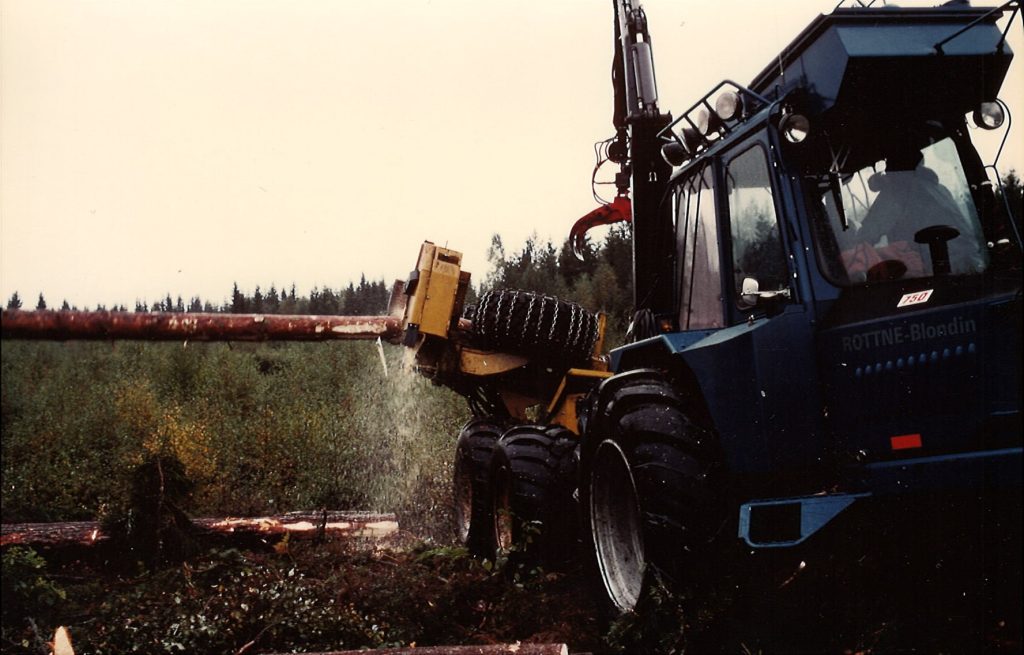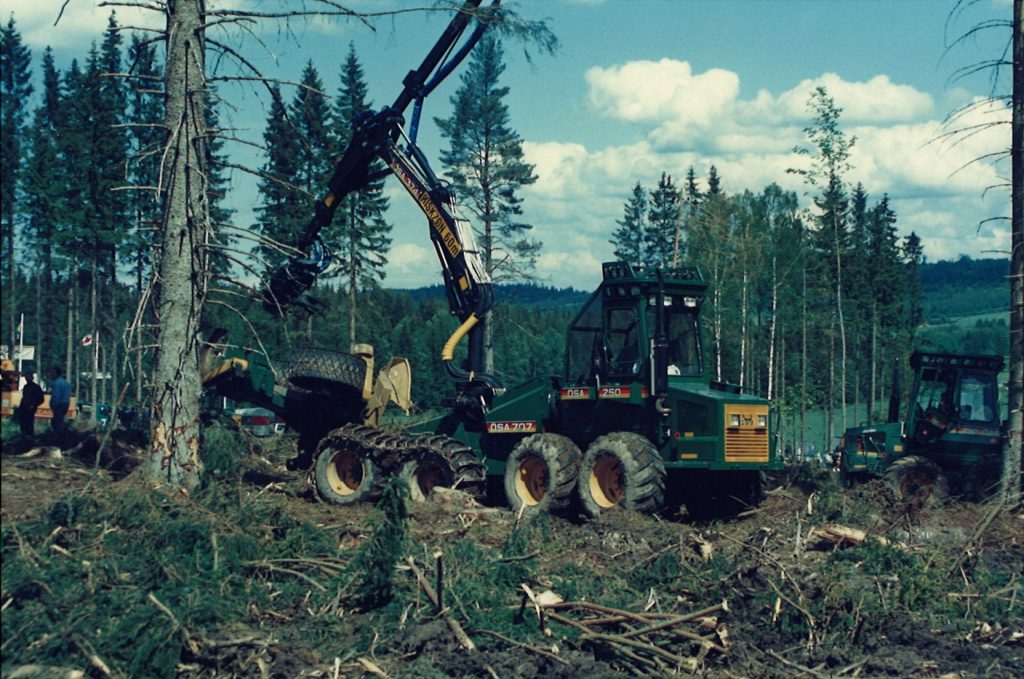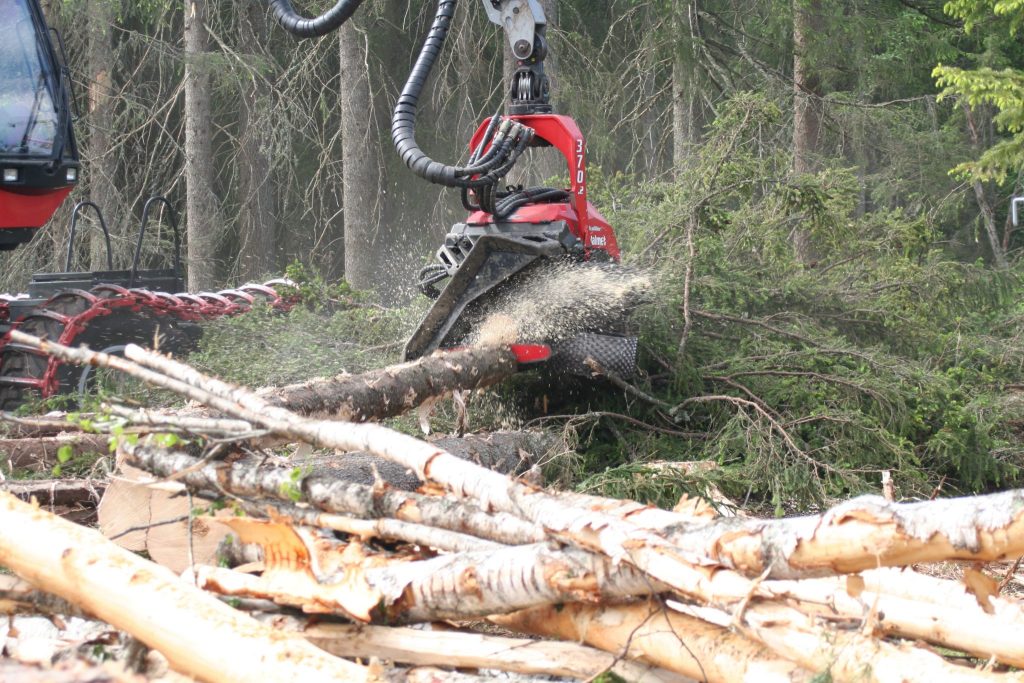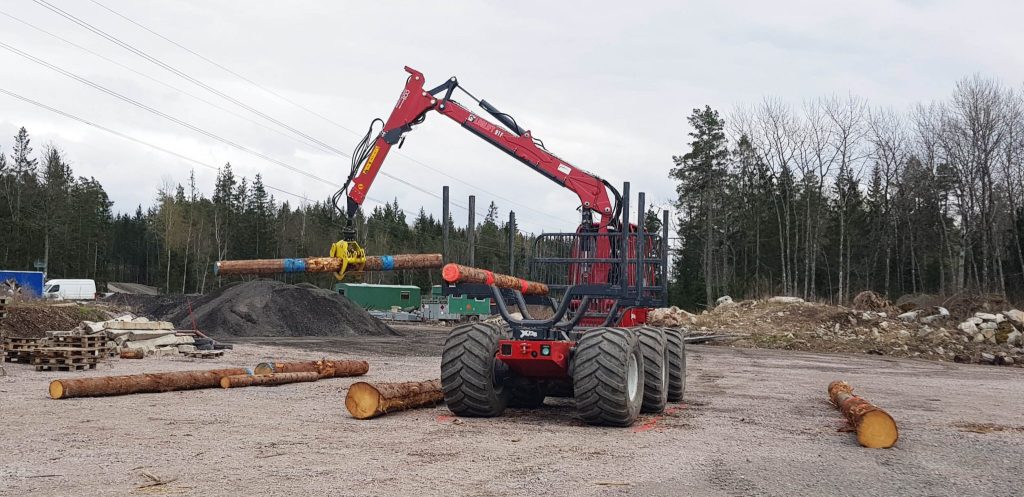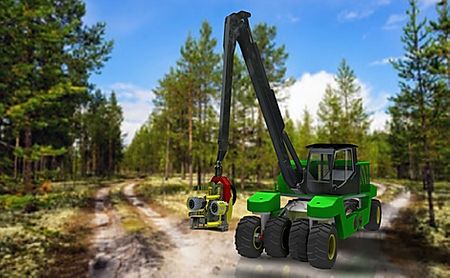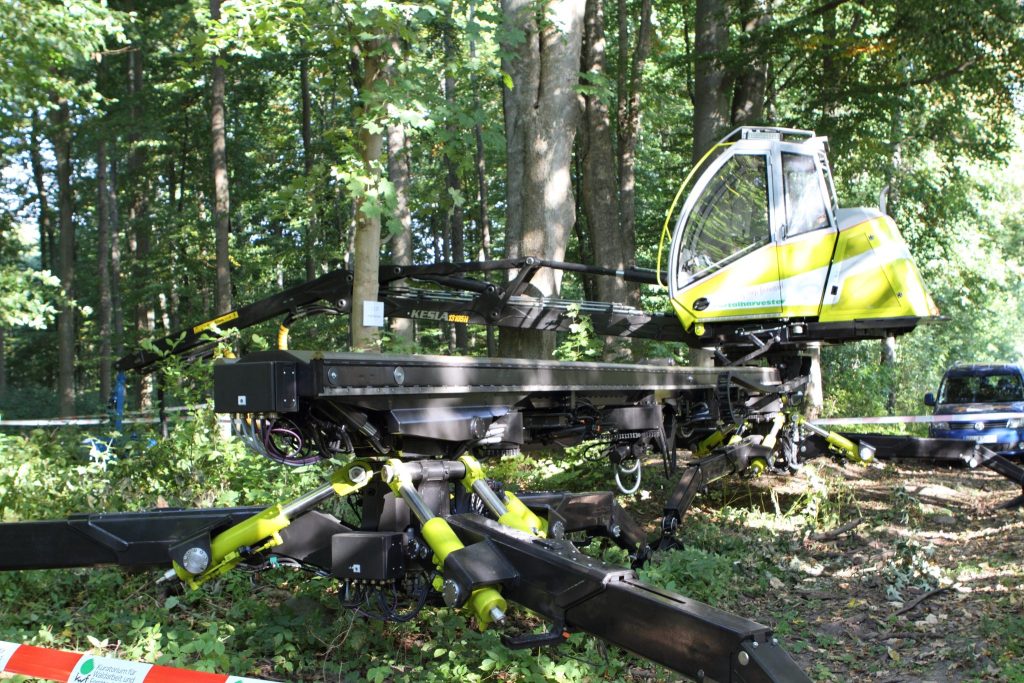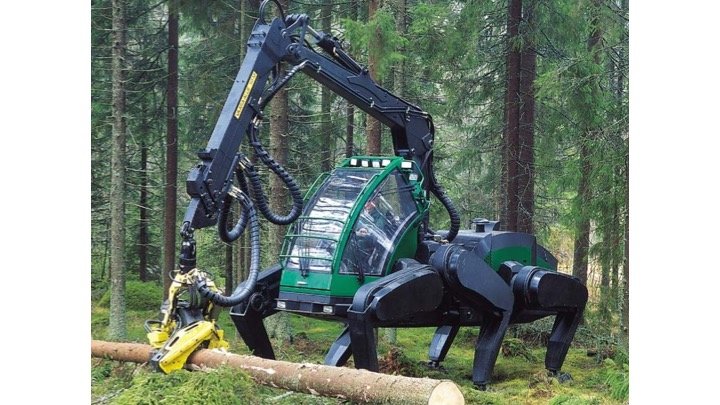Suddenly you realize that time has passed. It can make you wonder; “How did that happen?” It can also make you wonder; “What happened?” That´s a good question. What actually happened during the 40 + years I have worked within forestry and logging? The trees look more or less the same, but what are the differences?
Development in forestry and logging in the last 40 years
Forestry goes way back in time, some hundred years in many parts of the World, but when it comes to the development of technology a lot has happened during “my” 40 years. As you can see in my presentation at the bottom of each article, I started already in 1978, which was by studying forestry on a basic level. Back then the main tool for a logger was the chainsaw. That´s what we learned to handle at school in 1978. We also got to operate forwarders but very few of us took machine jobs directly after school when we graduated in June 1980.
Many chainsaw loggers were needed to feed the forwarders, and the industry, with wood. We also did a lot of clear-cut felling for processors that slowly was becoming more and more common. I was working in south Sweden. In the north, the machine revolution had come a bit further and the chainsaw loggers were already forced to make place for the machines.
Photo: Unknown
Five years a full-time chainsaw logger
It took me five years to end up in a machine. It was a part-time job. Half the time I still handled the chainsaw for another year or two. The first machine I operated was a brand new Rottne Blondin processor. This was in August 1985.
It was with mixed feelings but also unavoidable. If you wanted to stay in forestry, you had to take that step. Many of my fellow students from 78-80 left the forest for other businesses. One or two of my classmates went on to study forestry at the next level to become foresters. So did I, but much later.
Photo: KAJ
Forestry and logging through the decades
There is no doubt that a lot has happened during my 40 years in this business. The forwarders had been underway for quite some time already in 1980, but the harvesters were just about to breakthrough. Then, as good as all thinning in Sweden was made by chainsaw loggers. On the clear cuts, processors and harvesters had started to take over, step by step.
Illustration: Skogforsk
With all the machines entering the forest, the need for people on the ground decreased. In a few years’ time many forest workers had to search for other professions. Even if they wanted to switch to machine operators, like me, it was difficult. A machine produced so much more that the number of operators needed was quite modest compared to the manual work.
Illustration: Skogforsk
Two grips
The Rottne Blondin processor that I first operated was a so-called two-grip processor. An expression that nobody seems to use anymore. It meant that the harvester/processor took the tree in two grips; One with a felling head or a grapple (if it was pre-felled), and one with the processing unit at the back of the machine.
Photo: Peter Sandström
The one-grip harvester was waiting behind the curtain but seemed far away. It had the potential to become the solution of mechanized thinning, but nothing more. At least that´s what many old forest machine people said, including me.
Well, we all know what became of that, don´t we? I mean – does anyone today know what a two-grip harvester is, or remember the expressions one- respective two-grip harvester? As far as I know, there are very few of the two-grip machines still running today.
Photo: Per Jonsson
The future – another 40 years of forestry and logging
What if we look 40 years ahead? Of course, it´s difficult to say. Some people want to turn logging in to an office job by using remote-controlled machines. We wrote about that recently in an article that you can read here. We also wrote about an electrical harvester, a leveling harvester and a harvester without wheels. You can read those articles by clicking “remote-controlled” and the “harvesters” in the sentence above.
Photo: Skogforsk/Sveaskog
Illustration: Harvest Forsttechnik GmbH
The question is; Does any of those ideas represent the real future? Will any of them be the normal forest machine in 40 years? Remember; The one-grip harvester head became the “normal machine” in competition with many other ideas.
When looking at all ideas that have passed by, you understand how difficult it is for one idea to break through. We should be thankful to those who come up with new ideas and think outside the boxes. Even a crazy idea can become the future machine.
“Run like a Deere”
It´s funny that this one-liner has been used by a forest machine manufacturer that actually built a machine that was walking (not running) in the forest. Back then it was Timberjack, but still … In 1997 at the Elmia show they presented the walking harvester. They even had a show in town with that machine one evening. I was a trainee at Elmia then and participated at a press conference with Timberjack’s CEO Mikko Rysä. He got the question, “Are you serious?” He replied, “That depends on the market.”
It does, doesn´t it? But to get as far as thinking of the market we need ideas, new ideas and old ones in new costume perhaps.
So, keep thinking out there! And let us know if you have ideas or prototypes worth writing about.
Photo: Skogforsk
Source. Skogforsk






